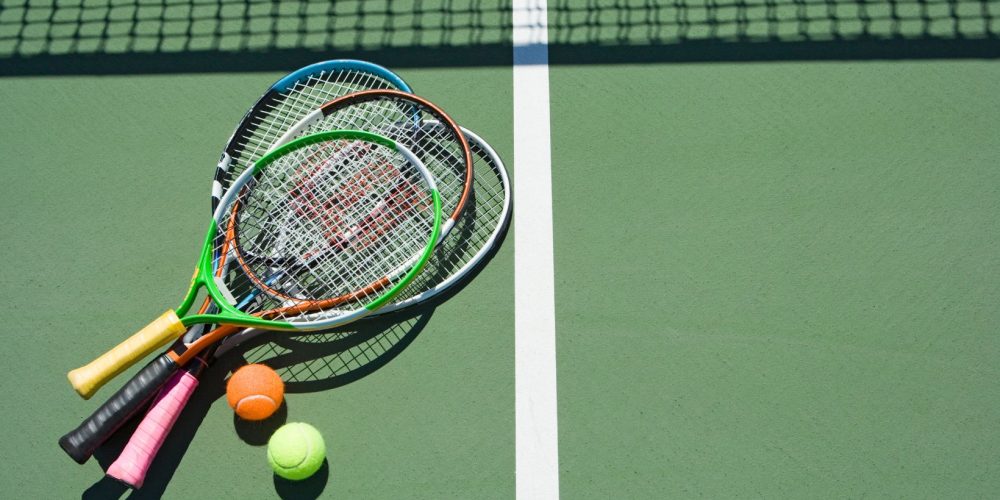Tennis is a sport that demands precision, speed, and endurance. To ensure optimal performance and safety, the choice of tennis court surface plays a crucial role. Among the various options available, acrylic tennis court surface has gained popularity for their durability, low maintenance, and customizability.
Introduction to Acrylic Tennis Court Surfaces
Acrylic tennis court surfaces are constructed using layers of acrylic coatings over a stable substrate. These coatings are typically made of acrylic resins, fillers, and pigments, which are applied in multiple layers to achieve the desired thickness and texture.
Benefits of Acrylic Tennis Court Surfaces
Durability
Acrylic tennis court surfaces are known for their exceptional durability, capable of withstanding heavy foot traffic, extreme weather conditions, and frequent gameplay. The acrylic coatings form a strong bond with the substrate, providing long-lasting protection against cracks, fading, and surface wear.
Low Maintenance
One of the primary advantages of acrylic tennis court surfaces is their low maintenance requirements. Unlike traditional surfaces such as clay or grass, acrylic courts can be easily cleaned with water and mild detergent. Additionally, periodic resealing and repainting can rejuvenate the surface, extending its lifespan and performance.
Customizability
Acrylic tennis court surfaces offer unparalleled customizability in terms of color, texture, and playing characteristics. Players and facility owners can choose from a wide range of color options to match their preferences or brand identity. Moreover, specialized additives can be incorporated into the acrylic coatings to enhance traction, reduce glare, or improve shock absorption.
Installation Process of Acrylic Tennis Court Surfaces
The installation of acrylic tennis court surfaces typically involves the following steps:
Surface Preparation
Before applying the acrylic coatings, the substrate must be thoroughly cleaned, repaired, and leveled to ensure proper adhesion and smoothness. Any existing cracks, potholes, or surface irregularities should be addressed to prevent future damage.
Application of Acrylic Coating
Once the surface preparation is complete, the acrylic coatings are applied using specialized equipment such as squeegees or rollers. Multiple coats may be required to achieve the desired thickness and texture. The coatings are then allowed to cure for a specified period to ensure optimal bonding and durability.
Curing Process
After the final coat is applied, the acrylic tennis court surface undergoes a curing process to allow the coatings to harden and stabilize.

This typically involves keeping the surface free from foot traffic and moisture for a designated period, as specified by the manufacturer.
Types of Acrylic Tennis Court Surfaces
Acrylic tennis court surfaces come in various types, each offering unique playing characteristics and performance attributes:
Cushioned Acrylic Surfaces
Cushioned acrylic surfaces incorporate additional layers of cushioning materials such as rubber or foam beneath the acrylic coatings. These surfaces provide enhanced shock absorption and player comfort, reducing the risk of injuries and fatigue during gameplay.
Textured Acrylic Surfaces
Textured acrylic surfaces feature specialized textures or coatings designed to enhance traction and grip. These surfaces are particularly beneficial for outdoor courts exposed to rain or humidity, as they help maintain traction and prevent slipping.
Comparison with Other Tennis Court Surfaces
When choosing a tennis court surface, it’s essential to consider how acrylic surfaces compare to other options such as asphalt, concrete, and clay:

- Asphalt: While asphalt courts are relatively inexpensive and easy to install, they tend to require frequent maintenance and can develop cracks and surface irregularities over time.
- Concrete: Concrete courts offer excellent durability and stability but may lack the cushioning and playability of acrylic surfaces.
- Clay: Clay courts provide excellent traction and shock absorption, but they require extensive maintenance and are susceptible to weather-related damage.
Factors to Consider When Choosing an Acrylic Tennis Court Surface
Several factors should be taken into account when selecting an acrylic tennis court surface, including:
- Climate: The climate and weather conditions in the court’s location can influence the type of acrylic surface best suited for the environment.
- Budget: The cost of installation, maintenance, and repairs should be considered when evaluating different surface options.
- Maintenance Requirements: Facility owners should assess the long-term maintenance requirements and costs associated with each type of acrylic surface.
Performance Characteristics of Acrylic Tennis Court Surfaces
Acrylic tennis court surfaces exhibit specific performance characteristics that impact gameplay:
- Speed: The speed of play on an acrylic court can vary depending on factors such as surface texture, temperature, and maintenance.
- Bounce: Acrylic surfaces typically provide a consistent and predictable bounce, allowing players to anticipate and react to shots effectively.
- Surface Temperature: Acrylic courts can absorb and retain heat, resulting in higher surface temperatures during hot weather. Proper shading and ventilation can help mitigate this issue.
Maintenance Tips for Acrylic Tennis Court Surfaces
To ensure the longevity and performance of an acrylic tennis court surface, regular maintenance is essential:
- Regular Cleaning: Sweep or hose down the court surface regularly to remove debris, dirt, and organic matter.
- Repairs: Promptly address any cracks, chips, or surface damage to prevent further deterioration.
- Resurfacing: Periodically resurface the court by applying a fresh coat of acrylic coatings to maintain its appearance and performance.
Conclusion
Acrylic tennis court surfaces offer a winning combination of durability, low maintenance, and customizability, making them an ideal choice for tennis enthusiasts and facility owners alike. Whether for recreational play or professional competitions, acrylic courts provide a reliable and high-performance playing surface that can withstand the demands of the game.





